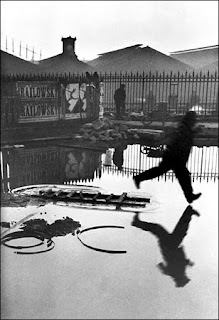How a camera works
Capture
Reflected light from an object passes into a camera then onto a light sensitive surface.
Process
The captured image is turned into something we can see
Store
The image is put into something we can keep, such as a printed photograph.
Analouge Photography
1. Light hits the camera through the lens.
2. Light hits light sensitive film and reacts with it.
3. Film removed from camera and put into chemicals for developing into negative.
4. Negative projected onto photographic paper and printed, using more chemicals.
Digital Photography
1. Light enters the camera through the lens.
2. Signal from sensor converted into digital data by a processor.
3. Digital data stored as an image onto the storage medium on the camera.
Data Transfer Methods
USB
USB is a physical connection used by cameras and scanners. This is possibly the fastest option.
Removable Card
Images can be captured by a digital device onto a removeable card. These cards can be connected to a computer via a card reader.
WiFi
Some cameras use WiFi technology to send digital images to a camera.
Bluetooth
Mobile phones, PDA's and some digital cameras are able to send digital images through Bluetooth technology to other devices.
Monday 8 February 2010
Monday 1 February 2010
Photo Ethics
Photo manipulation has been used throughout history to change the perspective the viewer has of a photograph. The photo becomes recontextualised, making he viewers reading of the image distorted from the true photograph.
Monday 4 January 2010
The Leica Standard
In October of 1932, a german camera company named Leica produced the Leica Standard, a compact camera.
Photo Journalism

Photo journalism is about capturing a moment to convey what is happening in reality. It is not about setting up and composing a still image with subjects posing, for example, but rather a snapshot of an event. The "father" of photo journalism is often said to be Henri Cartier-Bresson. With the release of the leica compact camera in the 30's, he captured numerous photos of reality.
Because there is a delay between the shutter being pressed and the photo being processed, the photographer must make a decision on when to press the shutter to capture the event. This is called the decisive moment.
As quoted from Henri Cartier-Bresson, "There is a creative fraction of a second when you are taking a picture. Your eye must see a composition or an expression that life itself offers you, and you must know with intuition when to click the camera. That is the moment the photographer is creative," he said. "Oop! The Moment! Once you miss it, it is gone forever."
Subscribe to:
Posts (Atom)